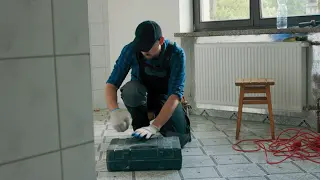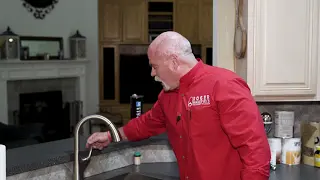Most people think of plumbing as a predictable trade—installing fixtures, unclogging drains, and swapping water heaters. But anyone who’s spent a day in the field knows that bizarre, head-scratching scenarios arise more often than you’d expect. From questionable DIY attempts to monstrous blockages, there’s no shortage of memorable finds. Below, we’ll explore some real-life examples of plumbing oddities—and see what lessons we can draw from each one.
The Surprisingly Decent DIY Under the Sink
Many amateurs shy away from installing sink drains, but occasionally a homeowner posts pictures of their handiwork, asking for validation. Sometimes, their question is “Does this look all right?” and, surprisingly, the result is tidy. The lines line up, the slip-joint connections are tight, and the hot and cold supply lines make sense.
Quick Observations
-
High-Loop Dishwasher Drain: When done correctly, it prevents backflow. This is easy to overlook, so seeing it installed can be a pleasant surprise.
-
Dual Angle Stops: A single stop can feed both the faucet and dishwasher if set up properly.
-
Minimal Pipe Bends: Fewer tight elbows means better flow and simpler maintenance.
Lesson Learned
Just because someone is a math nerd or an engineer by trade doesn’t mean they can’t replicate quality plumbing if they do the research. However, success often comes from carefully following best practices and local codes.
The Kitchen S-Trap Nightmare
Then there are cases where the homeowner inherits a newly purchased property, only to discover a comedic arrangement of drains that doesn’t quite meet code. An S-trap might be funneling sink water into the dishwasher, or a jam of mismatched pipes leads to backups.
Common Culprits
-
S-Traps: These are notorious for losing their water seal, letting sewer gas escape into the home. They’re often not code-compliant in many regions.
-
Dishwasher Drain Woes: If the sink line blocks, the water can force itself backward into the dishwasher. A proper high loop or air gap would fix this.
Lesson Learned
Always verify the drain configuration before finalizing a home purchase. That “simple fix” can turn into a mini-renovation if you must convert to a proper P-trap and re-pipe the dishwasher drain.
Toilet Tank That Looks Like a Sci-Fi Project
Sometimes a homeowner complains, “My toilet tank won’t fill,” and they post a photo revealing an odd fill valve nearly submerged—or chain links taut against the flapper. Looking at the picture, you see a mismatch of components where the fill valve sits too low, or water submerges the top, indicating a flawed assembly.
Potential Problems
-
Flapper Chain Too Tight: If there’s no slack, the flapper can’t seal properly.
-
Wrong Fill Valve Height: Some universal fill valves require adjustment so the top stays above the overflow.
-
Underwater Fill Valve: If the entire valve is submerged, it’s likely violating anti-siphon requirements.
Lesson Learned
Toilet internals vary, but they must be set to recommended heights. Inexpensive fill-valve kits often come with instructions—skipping these steps can cause low fill, constant running, or other nuisances.
The Shower Drain That Only Flows When You Touch It
A homeowner might share a clip: their new shower clogs quickly, but if they rub a hand across the drain, water starts swirling down. This suggests a possible venting issue, or an oddly placed drain that catches hair. Once they disturb the water’s surface, it begins a whirlpool effect.
Why It Happens
-
No Vent or Blocked Vent: Air can’t displace, causing water to hover near the drain. As soon as you break the surface tension or let some air in, it drains.
-
Hair or Soap Clog: A partial blockage near the drain might be freed temporarily by disturbing the water.
Lesson Learned
Start by snaking the drain or verifying the vent stack is clear. Shower backups often point to hidden blockages—vent or trap issues can be easily overlooked.
Double Ball Valve Mystery
In a comedic highlight, you see two ball valves back-to-back for no apparent reason. Possibly a plumber installed one valve, it leaked, and instead of removing it, they slapped on another. Or the original valve worked, but the next plumber felt the need to isolate differently.
Potential Rationale
-
Temporary Fix: The first valve might have had a minor leak the plumber couldn’t remedy on the spot.
-
Miscommunication: Another worker didn’t realize a valve was already installed.
Lesson Learned
If you spot redundant shutoffs for no reason, ask yourself whether there’s a deeper problem—like a partial leak or a plan to upgrade. Typically, a single properly functioning valve is all you need.
The Unintended Chocolate Milk Explosion
Few things are as gag-inducing as opening a drain line and discovering it’s filled with thick, sludgy black water that looks like lumpy chocolate milk. Plumbers sometimes find this horrifying brew when cutting into old lines or releasing a backed-up drain. The stench can be overwhelming, and you have to resist the urge to yank it out too fast.
How It Happens
-
Neglected Maintenance: Kitchen lines accumulate grease, coffee grounds, and soap scum forming a thick sludge.
-
Slow Drains: Over time, partially clogged lines let organic matter rot.
Lesson Learned
If you see sludge like this in your own lines, consider a professional drain cleaning. For plumbers, proceed with caution: open lines slowly, and have a bucket or catch basin ready.
The Geyser in the Parking Lot
A classic scene emerges on social media: sewage gushing from an exterior cleanout near a sidewalk or parking space. Water (and worse) blasts several feet into the air. This is usually the building’s main drain line. A clog pushes everything backward until the path of least resistance becomes that handy cleanout.
Why It Happens
-
Main Sewer Blockage: Paper products, tree roots, or foreign objects accumulate.
-
High Volume: Laundromat, busy restaurant, or apartment building runs water all at once, forcing a surge.
Lesson Learned
Check exterior cleanouts first if you notice backups in multiple fixtures. If the cleanout is erupting, the stoppage is likely downstream, requiring a main sewer machine or hydro jet to clear it.
The “Disturbing” DIY Solutions
In some images, you see tape, trash bags, or even saw blades used as part of a fix. One scenario shows a horizontal pipe with plastic taped to it, intended to channel water for a drain repair. It might be a quick attempt to divert a leak while cutting a new section of pipe. But it’s also the sort of method that leads to soaked walls or floors once the tape fails.
Common Workarounds
-
Ad Hoc Tunnels: Taping plastic sheeting to direct the water’s flow.
-
Improvised Seals: Rags stuffed in places they shouldn’t be.
-
Miscellaneous Tools: A saw blade repurposed as a bracket or stopper.
Lesson Learned
Temporary solutions might buy you time in an emergency, but they shouldn’t be the final fix. Quick improvisations risk bigger leaks or structural damage if not replaced by a permanent fix.
Why Do Plumbers Share These Oddities?
Plumbers (or homeowners who dabble in repairs) often post these pictures and videos out of shock, amusement, or a plea for help. Each scenario reveals the unpredictability of plumbing systems and the ways people cope—or fail to cope—with them. For those in the trade, it’s a cautionary tapestry of what can go wrong and how resourceful (or reckless) folks can be.
Tips for Professionals
-
Document and Share: If you see something that’s safe to record, capturing it can help train apprentices or demonstrate to clients why a thorough fix is needed.
-
Offer Solutions: Alongside the comedic value, it’s beneficial to explain how you’d resolve the problem. That fosters reputation and trust.
Takeaways for Homeowners and DIYers
-
Inspections Matter: Before purchasing a house, have a thorough plumbing check. S-traps and improperly vented fixtures can lead to persistent headaches.
-
Use Proper Tools: Even if you’re handy, don’t rely on duct tape and a prayer to fix serious leaks.
-
Ask for Help: Plumbing is one domain where small mistakes can cause major damage. Call a pro if you find yourself uncertain.
-
Maintain Regularly: Sewage explosions or black sludge blockages often happen because lines were never cleaned or inspected.
Final Thoughts
From surprise blockages that resemble lumpy chocolate milk to bizarre valve setups that defy logic, plumbing can be full of wild experiences. These snapshots remind us that well-designed solutions can quickly turn into nightmares if installed incorrectly—or if never upgraded as the system ages.
When it comes to the “craziest plumbing jobs,” half the fun is the shock factor, but the other half is the learning opportunity. Every baffling drain mess or odd fixture arrangement is a testament to the creative lengths people go—sometimes out of desperation. If you spot anything outlandish on a job site, remember to keep safety first, photograph responsibly, and see if there’s a teachable moment hidden in all that chaos. Chances are, someone else has run into a similar disaster, and your shared story might help them react more calmly when faced with the next plumbing curveball.




